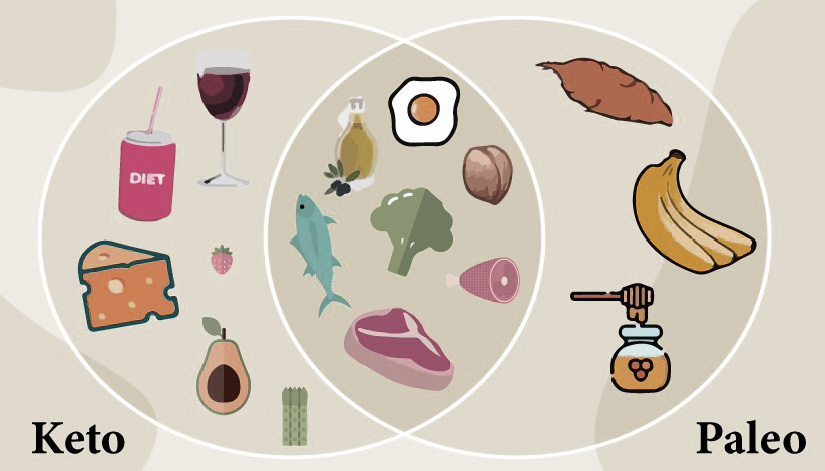Also known as the Caveman’s Diet, Paleo is one of the few low-carb diets often compared to the Keto diet. Imagine being transported back to the Stone Age, about 2.5 million years ago. When hunger strikes, you eat whatever is available – that’s the idea behind the Paleo diet. It includes a lot of milk, nuts, eggs, dairy, meat, vegetables, and fish. The Paleo diet is effective for reducing processed food consumption and promoting fast weight loss, along with improving cardiovascular health and regulating blood sugar levels.
On the other hand, the Ketogenic diet differs from Paleo as it primarily focuses on weight loss, whereas Paleo emphasizes healthier food choices irrespective of weight loss. In the Keto diet, your body is compelled to shift from relying on glucose to burning fat for energy. Initially developed to treat epilepsy in children, Keto has now been found beneficial for various diseases such as Type 2 diabetes, Parkinson’s disease, and fatty liver disease. The change in metabolism can be challenging for the liver, leading to the experience of “keto flu” during the initial weeks. Proper electrolyte consumption can help manage keto flu, although its severity may vary among individuals.
Regardless of which diet you choose, it is important to keep your dietician or doctor informed about your decision. Both Keto and Paleo are lifestyle choices rather than simple weight loss diets. Paleo focuses on eliminating junk foods to promote overall wellness, while Keto requires strict adherence to a diet that induces ketosis and initial water weight loss. In Keto, 80% of your nutrition comes from fats like meat and avocado, challenging your body’s inherent metabolism and reducing reliance on sugar for energy. By avoiding sugar, a major contributor to many prevalent diseases, your body becomes more resilient and prioritizes fats and proteins for energy.

